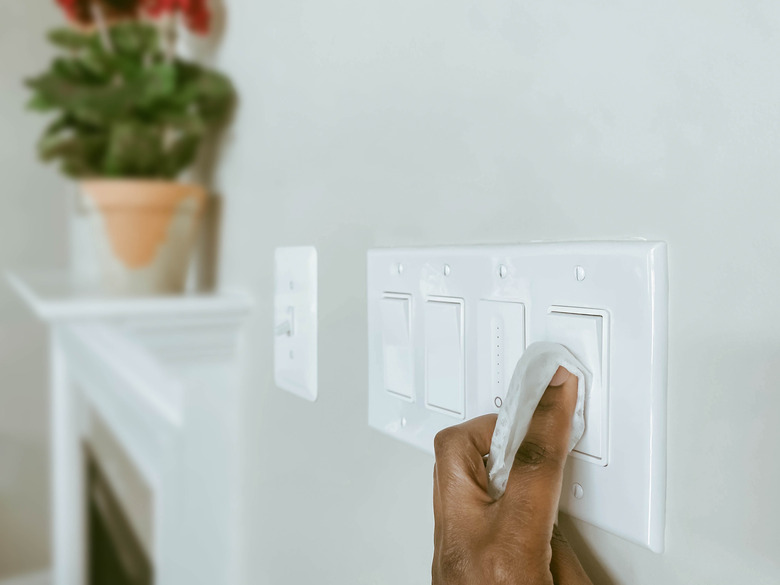How To Wire Two Light Switches With One Power Supply
It's common to power two or more light switches from a single power supply, and the switches can be in the same electrical box or different parts of the house. The power source is typically the building's main electrical panel. A single circuit wire can split to power several loads, including receptacles, although mixing receptacles and lights on a single circuit is a practice that's going out of style. Two light switches connected to the same power source can control a single light fixture too. In this configuration, the switches are called, confusingly, three-way switches.
Warning
It is recommended to contact an electrical professional to take care of any of your wiring needs.
Switches in Same Electrical Box
As the diagram at Electrical 101 shows, the line cable is all you need to supply power to a pair of switches in a single electrical box. After making sure the power is off, you strip the black wire in the two-conductor cable (which also has a ground wire) and make a pigtail with two 6-inch lengths of black wire salvaged from a spare piece of cable of the same wire gauge. You make a pigtail by twisting the three wires together and screwing on a wire cap to insulate the connection.
The pigtail gives you two hot wires instead of just one. Connect one wire to the first switch in the box and the second wire to the other switch, and connect the black wire from each of the lights to the other terminal on its respective switch. The white, or neutral, wires bypass the switch, so the one coming from the power source and the one from the light get spliced and capped in the box. The ground wire, on the other hand, must connect to both switches, and the easiest way to do this is to make a pigtail as you did with the hot wires.
Switches in Different Electrical Boxes
The procedure for hooking up two switches that aren't in the same electrical box is basically the same. The only difference is that a cable that connects the two electrical boxes replaces one of the 6-inch jumper wires in the pigtail.
Make the pigtail in the box into which the line cable enters, or Box 1. One wire in the pigtail is the line wire and one goes to the switch in Box 2, and the third is a single jumper wire needed to hook up the switch in Box 1. Just like before, twist the three wires together, screw on a cap, then connect the jumper to the switch in Box 1 and the single black wire in Box 2 to that switch. Splice the white wires together and make pigtails of the ground wires and connect one to each switch.
You can connect as many switches as you want in this way, up to the limit of the circuit.
Wiring a Three-Way Switch
A three-way switch is one that works in conjunction with another three-way switch to power the same light. You often find three-ways at opposite ends of a staircase. A three-way switch has an extra terminal because a pair of three-ways has to be connected to each other as well as to power and the light. You can see a diagram at Electrical 101.
The cable you use to connect three-way switches to each other has three conductors and a ground, and the extra conductor is usually red. The red wire connects one set of brass terminals on the two switches, and the black wire connects the other set. The bottom terminal on one of the switches is used for the black wire coming from the power source, and on the other switch, it connects to the black wire going to the light.
